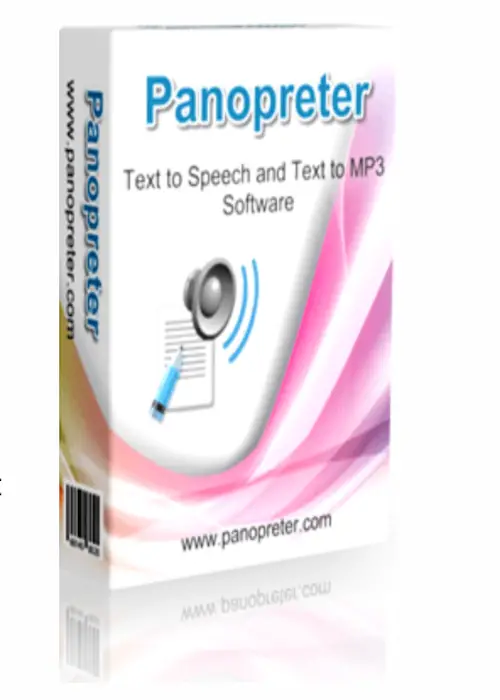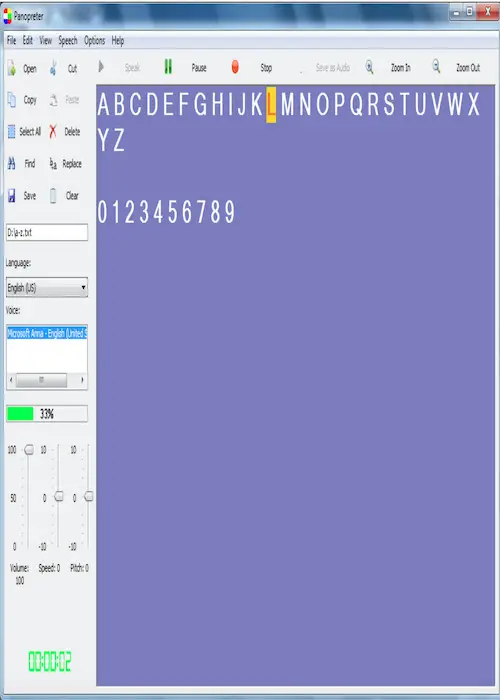
Introducing Panopreter the text-to-speech experts
In recent times, technology has played a significant part in the lives of people with disabilities. Text-to-speech (TTS) software is one of the emerging technologies that has enabled people with visual, physical, or learning disabilities to access written content without depending on their eyes or hands.
Here, we introduce Panopreter, an expert in TTS software. We also explore the basics of TTS, how it works and explain its benefits for people with disabilities.
What is text-to-speech software?
Text-to-Speech software is a form of assistive technology that enables users to convert written text into spoken words. It works by using a computer-generated voice that reads audibly any written text, that can be helpful for those who have difficulty reading or comprehending written content.
There are several ways in which TTS technology can be used to help people with disabilities.
For those with visual impairments, it can help them access written content without relying on their sight. This can be particularly useful for those who have difficulty reading small or faint text, similar to books, emails, or web pages.
It can also be helpful for people with physical disabilities such as those who are paralysed or have limited mobility, as it enables them to access written content without requiring them to physically interact with a computer.
TTS Technology can also be helpful for people with learning disabilities, such as dyslexia or attention deficit hyperactivity disorder (ADHD), as it can help them comprehend written content more smoothly. By listening to the text being read audibly, they can concentrate on understanding the information rather than struggling to read the words on a page.
One of the most significant benefits of TTS Technology is its ability to customise the reading experience for each user. Many options allow users to adjust the speed, volume and tone of the computer-generated voice, making it easier to understand and more pleasant.
Some software also includes features such as highlighting the text being read or displaying it in a larger font, further enhancing the user experience.
In addition to its benefits for people with disabilities, TTS technology has broader applications in the tech industry. Many companies use TTS technology to create voice assistants or to enhance the accessibility of their products.
Voice assistant products are implemented in telecom, IT, manufacturing, aviation, education, healthcare, hospitality, transportation, banking, entertainment, media and others.

Benefits of TTS technology for people with disabilities
Text-to-speech technology has a number of benefits for people with disabilities. For those with visual impairments, TTS provides an alternative to reading printed text, which can be difficult or impossible. TTS technology can be used to read text from websites, eBooks and other digital content, allowing individuals to access information and entertainment in a way that was previously unavailable to them.
This can have a profound impact on their quality of life, enabling them to learn, work, and socialize more effectively.
For individuals with reading difficulties, such as dyslexia, TTS can make it easier to understand and retain information. By listening to text instead of reading it, they can focus on the meaning of the words without being distracted by spelling errors or other issues.
TTS can also help people with learning disabilities, such as attention deficit hyperactivity disorder (ADHD), who may find it challenging to concentrate on written text. For those seeking ADHD treatment options, online providers like Klarity offer convenient access to licensed medical professionals who can provide personalized evaluations and treatment plans.
Another benefit of this technology is that it can improve accessibility for people with physical disabilities. For those who have difficulty using a mouse or keyboard, TTS can provide an alternative way to interact with digital content.
This can be particularly useful for individuals with motor impairments, such as cerebral palsy or spinal cord injuries, who may have limited dexterity or mobility.
People with intellectual disabilities may struggle with reading due to difficulties with decoding and comprehension. TTS technology can help by reading text aloud, making it easier to follow along and understand the content.
Some individuals with intellectual disabilities may have difficulty expressing themselves verbally. This technology can allow them to communicate by typing out their thoughts and having the computer read them aloud.
This technology can also be used to support learning by providing audio versions of textbooks, study materials and other educational resources. This can be particularly helpful for students with intellectual disabilities who struggle with reading.

Introduction of Panopreter software and how it works
Panopreter is an easy-to-use text-to-speech software program that converts written text into spoken audio. It is a stand-alone software that runs on its own without an internet connection. It is designed to provide natural-sounding, high-quality voice output for a wide range of applications, such as reading documents, web pages, emails, eBooks, etc.
The software can read aloud text files in a variety of formats, read the text in other software windows, it can also convert text to mp3 and ogg audio files.
Panopreter works by using advanced algorithms to analyse and synthesise written text into spoken audio. The software uses a natural-sounding voice that is generated by a text-to-speech engine, which simulates the sounds of human speech using various linguistic and acoustic models.
The software can be operated through a user-friendly interface, which allows users to load text files or enter text manually. Once the text has been loaded, users can choose from a variety of voices according to their interests.
The software also offers a range of customisation options, such as replace, clear, delete, font, colour and background of the text display. Apart from English, it offers many languages like Spanish, Italian, French and Japanese.
One of the key features of Panopreter is its ability to read aloud text in real-time, allowing users to listen to their documents as they work. This can be especially useful for individuals with visual impairments and learning disabilities like dyslexia and ADHD or for those who prefer to listen to information rather than read it.
Overall, Panopreter is a powerful text-to-speech software program that provides a range of features and customisation options for converting written text into spoken audio. Its intuitive interface and natural-sounding voice output make it a valuable tool for individuals with disabilities and anyone who prefers to listen to information rather than read it.

How Panopreter software helps people with disabilities
Panopreter is an easy-to-use text-to-speech software that can benefit impaired individuals in several ways:
Text-to-speech conversion for individuals with visual impairments, reading long texts can be challenging. Panopreter can convert text into speech, enabling visually impaired individuals to hear the text rather reading it.
Language learning – Panopreter can also help individuals with hearing or speaking disabilities to learn new languages. It can convert textbooks into speech in various languages, helping individuals to enhance their language proficiency.
Accessibility – Panopreter is designed with availability in mind and offers a user-friendly interface that’s easy to navigate. This makes it an ideal software for individuals with disabilities who may have difficulty using complex software.
Panopreter is the best tool I’ve used for proof reading to catch errors and typos. I’ve used it with everything from important emails to entire novels. ~ Science fiction writer and translator Sue Burke.
Conclusion
In conclusion, we can say text-to-speech technology has revolutionised the way we interact with digital content. Its ability to convert written text into spoken words has made it accessible to people with disabilities and reading difficulties.
Moreover, it has improved productivity and efficiency for those who consume a large amount of written content. While technology has come a long way, there is still room for improvement in terms of naturalness and accuracy of speech.
As development continues, we can expect even greater advancements in the field of text-to-speech technology.
By Panopreter
More on Disability Horizons…
- 6 ways to secure employment if you have a learning disability
- What is universal design and how will it benefit disabled people?
- 15 inclusive books by disabled women writers
- Buy a dyslexia ruler reading aid on the Disability Horizons Shop